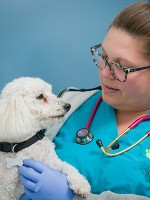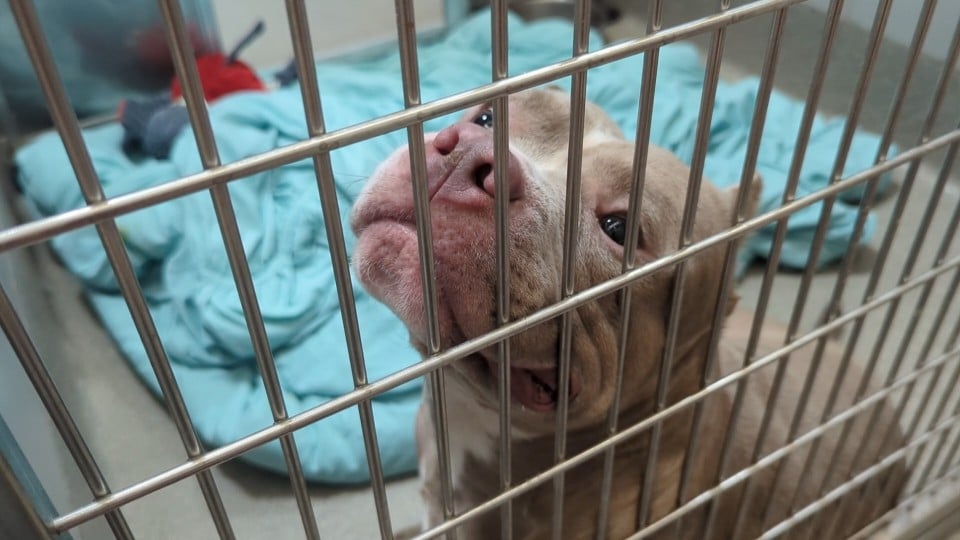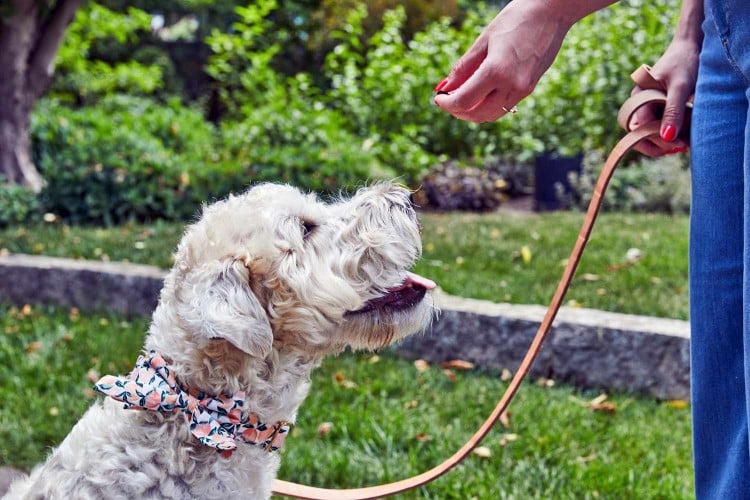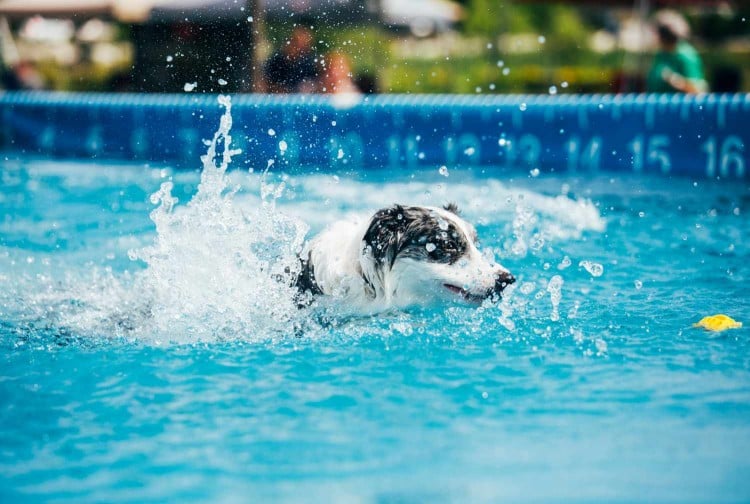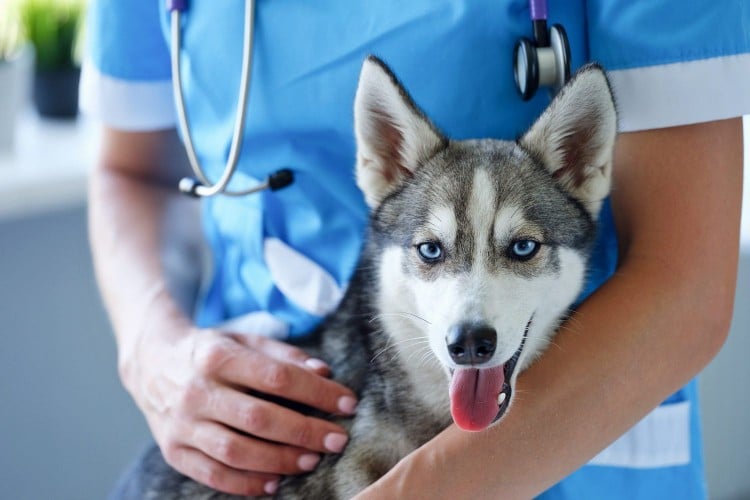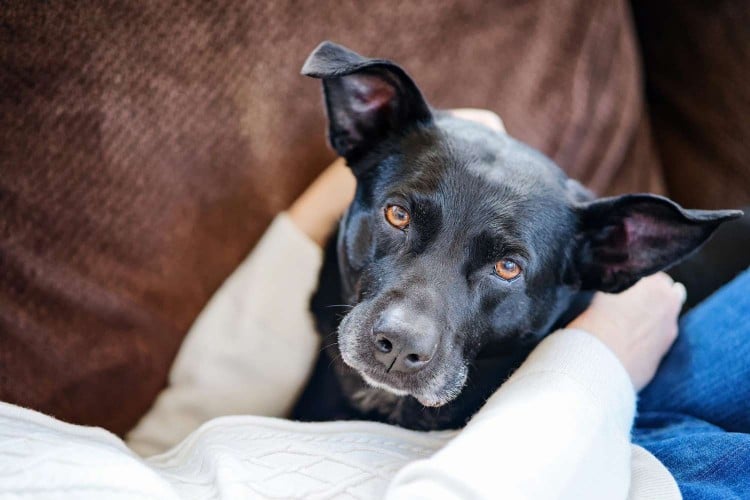
Therapy dogs provide comfort to those in their communities and make days a little brighter for those they help. Although many people use the terms therapy dog and service dog interchangeably, they are not the same.
"Most people have no idea that the terms service dog, therapy dog, emotional support animal, and comfort animal are not all interchangeable. It's very rare that anyone come to our classes and has any idea that these mean different things," says Donna Frindt, executive director, instructor, and examiner at Project Canine in Seattle, Wash.
Service dogs and therapy dogs serve different purposes and have different access to public places. "Service dogs have legal rights to access under the Americans with Disabilities Act," Frindt says. "They are legally defined as working dogs and are dedicated to one person to support a need such as a medical alert or physical task. There are also psychiatric service animals that support conditions like severe PTSD."
"Therapy dogs have no legal rights of any kind," Frindt continues. "They are intended to go out into the community accompanied by their handlers to provide emotional comfort to people in various locations such as hospitals, elder cares, juvenile detention centers, hospice, and many more types of facilities and schools where people would like support."
But their lack of legal status doesn't make their work any less important. Therapy dogs do great things in their communities and bring joy to many that are otherwise grappling with hardship. This can be a rewarding experience for both dogs and owners who want to positively contribute to their community and those community members who could use a therapeutic respite from their daily life struggles. "All of our therapy dog teams have had a very positive impact on their visitors in the various places where they visit. We have so many stories and so much good feedback," Frindt says.
Courtney Briggs, operations manager and head trainer for Zoom Room Dog Training nationwide
The comfort of an animal is like no other.
— Courtney Briggs, operations manager and head trainer for Zoom Room Dog Training nationwide
Therapy dogs can be great resources for people who have experienced trauma or struggle with Post-Traumatic Stress (PTS). Courtney Briggs, operations manager and head trainer for Zoom Room Dog Training nationwide, says the Dallas, Texas, community has reached out to the Zoom Room location following tragic events. A group comprised of therapy dogs and handlers who've completed their therapy dog training program brought their pups to comfort police officers who had suffered trauma after responding to the incident.
A therapy dog may also commonly be taken to nursing homes, hospitals, school classrooms, or after school programs for kids. Briggs says that therapy dogs can be a great comfort for kids diagnosed with an Autism Spectrum Disorder or kids with learning disabilities. This comfort can assist them in being better able to focus. "Just petting an animal helps them do their homework. It helps them get through school. The comfort of an animal is like no other."
Can Any Dog Become a Therapy Dog?
The short answer is no, but surprisingly, it's not because of breed. "Not every dog can be a therapy dog. There are specifics of temperament, obedience skills, relationship with the handler, and more which a dog needs to successfully be a therapy dog. It's a lot more complicated than it might appear at first look," Frindt says.
So what determines whether a specific dog will be successful as a therapy dog or not? Various temperament traits are really important, and not all dogs are cut out for the intense commitment to training. Does your dog have the following temperament traits of a good therapy dog?
Confidence and Resilience
Dogs that have experienced prior trauma or have challenges with fear or anxiety may have trouble with the therapy dog lifestyle. Dogs that don't experience excessive stress or separation anxiety may often succeed in the large-group environments that are common for therapy dogs.
Briggs says that in order to be a good therapy canine, the dog should be versatile enough to handle different types of situations with ease. "We live in a very eclectic world, and we want a dog to be used to being handled by all different types of people," she says.
A resilient dog may also better succeed at learning new skills during the obedience training good therapy dogs need.
Social Demeanor
A good therapy dog is social and loves strangers, but is not overly social to the point that they get distracted from their work.
Cool, Calm, and Collected
A therapy dog needs to be largely indifferent to stimuli, enjoy petting, and be able to recover quickly from instances of rough petting. "Because you're going to get things like people raising their voices, or pulling on the dog's tail or ears, or people petting them really hard, it has to be an animal that can handle those things," Briggs says.
Though a therapy dog's resilience is an important factor, responsibility also falls on the handler to advocate for their pup to ensure they're not treated roughly.
Owner-Focused
A therapy dog that is owner-focused is not overly worried about everything going on in the world around them separate from their handler. This is where bonding activities like exercising together, playing games, and teaching your dog commands early on in your relationship can help build a strong connection between dog and handler.
Your Dog Actually Wants to Be a Therapy Dog!
"There are a number of things we look for in a therapy dog, but the most important one is [whether] the dog actually wants to do this. The most common mistake a prospective handler makes is believing their dog wants to be a therapy dog when it actually doesn't," Frindt says.
However, as Briggs explains it, it's not just the dog that needs to be the right fit for therapy animal work. A dog could have a delightful personality, but they still need help from their owner to be successful. "It's a partnership between the dog and the human. The human has to dedicate the time into obedience training," she says. "You can't force the dog into working with you, the dog has to want to work with you, which is done through positive reinforcement training and rigorous socialization."
Therapy Dog Training
Timing is a major success factor when starting training. To be successful as a therapy dog, experts say it's better to start as early as possible. The first step Briggs recommends for future therapy dogs is proper puppy socialization. According to Briggs, puppies need significant socialization within their first 4 months of life.
However, if your dog is already older and you still want to give therapy dog training a try, not all hope is lost. "We do get dogs that are older and do just fine. It's more about temperament and how receptive they are to training," Briggs says.
In addition to socialization, another helpful strategy in the early stages of the journey toward therapy dog registration is to help your dog learn tricks. "Tricks give your dog something to do, are super pleasing to other people, and create a better bond between you and the dog," Briggs says.
Even when an owner starts building a bond with a therapy dog hopeful early on, it's best to prepare for an arduous process. "The average age of a therapy dog is 4-6 years old. Many people want to push their young dogs to become therapy dogs before they are ready. Most dogs under 2 years old are simply not mature enough to be a visiting therapy dog," Frindt advises. "Don't be in a rush! Give your dog time to be a dog and get through adolescence before pursuing therapy dog certification."
Once a puppy or dog is showing promise in terms of temperament, the next step is a skills evaluation by a professional dog trainer or behavior consultant to gauge where the dog places in his or her abilities, followed by obedience training to enhance skills.
Therapy-dogs-in-training should generally:
- Be able to "leave it": When something is on the ground or in someone's hand.
- Be confident: The dog should be able to get smothered with attention without being overly social or fearful and anxious.
- Be used to different walks of life: This includes diverse people, environments, and activities.
- Be able to resist the chase: The dog should walk by a person, another dog, or other animal without reacting or chasing them.
- Be able to emotionally connect: "All the dogs need a basic repertoire of obedience behaviors including sit, down, wait/stay, come, and leave it. However, we don't train therapy dogs for "tasks" per se because what they are doing is emotionally connecting with their visitors, not doing tasks for the visitors," Frindt explains.
It's important to note that there are no state or federal rules or standards for therapy dog training, and depending on the registering organization, training requirements may differ.
Process for Therapy Dog Registration
After mastering obedience training, a dog can take a beginner level obedience course called a Canine Good Citizen (CGC) program, which is recognized by the American Kennel Club (AKG), followed by the CGC test. The CGC test is comprised of ten skill assessments, including accepting a friendly stranger, sitting politely for petting, coming when called, and more. A passing grade earns the dog registration with AKG and, while not required, it shows that the dog has a propensity to succeed with obedience training and sets him up well to prepare for therapy dog training.
Whether a dog partakes in the Canine Good Citizen test or not, they are eligible to obtain registration by Pet Partners or a similar authority once they show promising potential in their training. A passing grade from a more rigorous registration program like this shows that the dog is ready to provide the comfort they're so often sought out for.
Once a dog is a well-trained and recognized therapy dog, the training doesn't stop there. "You never really stop training. Just like an athlete never quits training, a dog isn't done training after getting a certification. It doesn't have to be as rigorous as before, but you have to keep honing those skills or they can get rusty," Briggs emphasizes.
